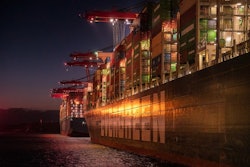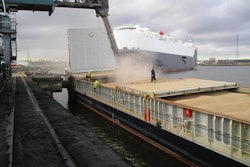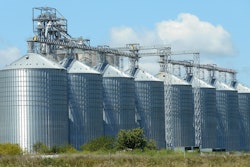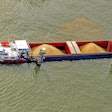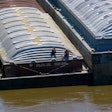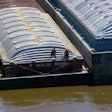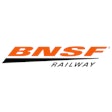
The United Soybean Board (USB) invests in many infrastructure projects that will help increase profits for soybean growers and the industry itself, which is undergoing significant changes. Through the soy checkoff, USB pursued feasibility studies that led to the dredging of the Mississippi River in Louisiana, a terminal expansion at the Port of Grays Harbor in Aberdeen, Washington, and a reduced freight toll agreement on the St. Lawrence Seaway.
“The goal of these investments is to give United States soybean growers a competitive edge in the global market,” says Maryland farmer Belinda Burrier, USB director and the board’s priority area coordinator for infrastructure and connectivity. “These investments help us to be more reliable in moving soybeans from our farm to the global customer.”
Burrier will speak on this topic at the National Association of Farm Broadcasting (NAFB) national convention in Kansas City. USB prioritizes investments in infrastructure to keep U.S. soybean growers in a global leadership position while also benefitting transport of other commodities and agricultural inputs. She says that while the checkoff is not allowed to invest directly in construction projects, it is enabling these projects by investing in feasibility and engineering studies
“These projects are a win-win for the soybean farmer as far as return on investment,” Burrier says. “We’re making $12.34 on every dollar invested. I don’t know too many investments that have that kind of return.”
Investments from the checkoff led to significant projects, including:
- Dredging the lower Mississippi River, which will allow barges to deliver an additional 500,000 bushels per ocean vessel, which creates potential to add $461 million in annual realized value for U.S. soybean farmers. More efficient shipping builds value in the supply chain and expands opportunities for our soybeans to reach our customers around the world.
- Port of Grays Harbor Terminal 4 Expansion and Redevelopment Project, which enables increased soybean meal exports from three to six million metric tons with expanded infrastructure. This investment is a vital piece of the puzzle because it has a direct route for going into Southeast Asia and other points in the Pacific Rim.
- On the St. Lawrence Seaway, the USB through a checkoff investment helped enable an agreement to reduce freight tolls by 50 percent to incentivize greater use by soybean exporters and to diversify the transportation system.
“The United Soybean Board’s mission has always been to create value for soybean farmers,” says Meagan Kaiser, USB chair and Missouri farmer. “I hope other organizations across the various commodities will take to heart that collaboration can stimulate significant improvements to our nation’s infrastructure and result in added value for our products across all crops.”



